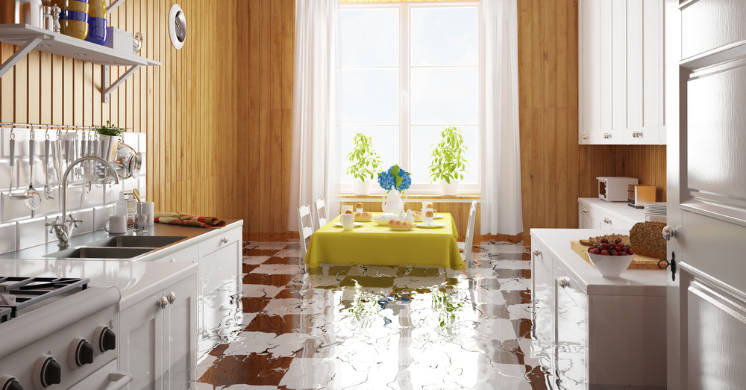
If you’re planning to head out of town for a vacation or trip, the last thing you want to come home to is water damage. A burst pipe while you’re away can cause substantial water damage, create dangerous mold and generate costly repairs. You could also discover that your insurance policy will not pay for the damage if you didn’t take the necessary precautions.
A water pipe will burst or split when water inside it freezes, expands and has no place to go, creating excess pressure on the pipe. Pipes installed on exterior walls or located in unheated spaces are more susceptible to freezing; but a pipe can burst anywhere if the temperature drops enough to cause freezing. A faulty furnace, no fuel, a tripped breaker or a power outage can all lead to temperature drops.
If you plan to be away, it’s best to have someone check on your home daily to ensure there is heat and no apparent issues. If this isn’t an option, the next best thing is to shut off your water supply and drain the pipes. If you’re away from your home four consecutive days or longer, these precautions are a requirement under most property insurance policies to ensure your home is covered.
Locate the main shut off point to your home’s water supply. The shut off valve is usually located in the basement near the water meter if you have city or town-supplied water. If you are on well water, it will usually be near your pressure tank or near the main water line. Turn the valve clockwise (to the right) to close it. If you use well water, also turn off your well pump and expansion tank with their switch or by the breaker or fuse.
The next step is to drain your water lines. If you have a taps in the basement, start here and open both the cold and hot water taps until the water stops running. Now go the top floor and work your way down to the rest of the faucets including sinks, bathtubs and showers.
Next, flush all of the toilets starting from the top floor. Be sure to remove the tank covers and hold down the lever until all of the water has drained out. It’s also recommended that all appliances including dishwashers and washing machines be drained by running them through the wash cycle.
Finally, slowly pour some plumbing antifreeze into all of the drains and toilet bowls and enough in the toilet tanks to cover the mechanisms. This will prevent any water that hasn’t drained from freezing.
First, look around your home for any signs of water damage. Next, check to make sure all of the taps are closed and open the main water supply. Starting from the top floor, slowly open all of your taps (both hot and cold) until you have a solid flow of water. Don’t be alarmed if you hear noises as this is just the sound of air escaping from the lines. Flush all the toilets and they will refill with water. Finally, be sure to check around your home once again for any leaks.